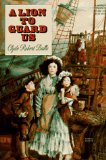Continuing on our theme of insects we moved to bees as our next subject for unit study. Since we already had a thorough understanding of butterflies, learning the anatomy of a bee was pretty straightforward. I thought that Wikipedia had a pretty good anatomy of a bee diagram, but we also found one to label yourself at Enchanted Learning, and another great one on the “How Stuff Works” website.
We were fortunate enough to get two different bee downloads for free this summer. One from Hands of a Child that contained all the research information in one handy area and one specifically on honeybees from Notebooking Nook that contained 14 mini-books to use in your lapbook. We used both of these, but I must say that the freebies from Homeschoolshare on bees were wonderful additions!
Unfortunately I wasn’t able to locate a beekeeper nearby so we could visit, but we did do some backyard observations. While I haven’t yet gotten around to it I am planning to order some honeycomb for the kids to examine. They usually sell it in 4 inch sections. The great part is that after they are done examining the honeycomb they get to eat the honey. I have read that you can either drain the honey and enjoy it in the usual way or simply take a bite of the honeycomb and chew it kind of like gum until the honey taste is gone.
In addition to the loads of books from the library I was also able to borrow a copy of a PBS NOVA movie called Tales from the Hive. It was an incredible up close look into the hive of a honeybee. It was great to see things like the bee dance, hierarchy of the hive, and how the queen bee is chosen as if you were actually there! I would highly recommend looking for this video if you are planning a bee study of your own.
I thought it would be cute to make the lapbook in bee colors. We took foam paper and cut strips to glue to the outside and made lines with black marker on the inside to match. I found the clipart for the beehive here. Hailey finished it off with some of her own artwork.
The first side of our lapbook includes the types of bees that live in a hive, I copied pictures from a library book to place on each page. The anatomy of a bee diagram was from wikipedia. The bottom of the folder has the lifecycle wheel and bee predators (robber fly, birds, spiders, praying mantis). On the right side is a book that has a list of all of the different jobs that a worker bee has in the hive throughout their lives.
The second side of the lapbook has a book on social bees (honeybees and bumblebees) and solitary bees (mason bees, leafcutter bees, etc) and a flap book on the dances that a worker bee when she has found a source of nectar. I had Hailey draw a picture of the direction that the bees would go after observing the bee dances under each flap. The left flap shows a pocket full of bee vocabulary words and on the right flap is the pocket holding our bee observation charts.
Filed under: Homeschool, Lapbook, Unit Study | Tagged: bee unit study, bees, Homeschool, honeybees, Lapbook, Unit Study |










[…] http://www.homeschoolshare.com/honey_bee_lapbook.php https://homeschoolhouse.wordpress.com/2008/09/19/bee-unit-study/ http://moneysavingmom.com/2011/07/educational-freebie-all-about-bees-study-unit.html […]
This is such a great rescource. Thanks so much for your work in posting it.
Thanks so much for this post. What a great resource.
[…] Easy Fun School, The Home School Mom, Pioneer Unit Study, Pioneer and Native Americans, Bee Unit Study, Bears, Cow Facts, Owls, Westward Expansion, Wolves, […]